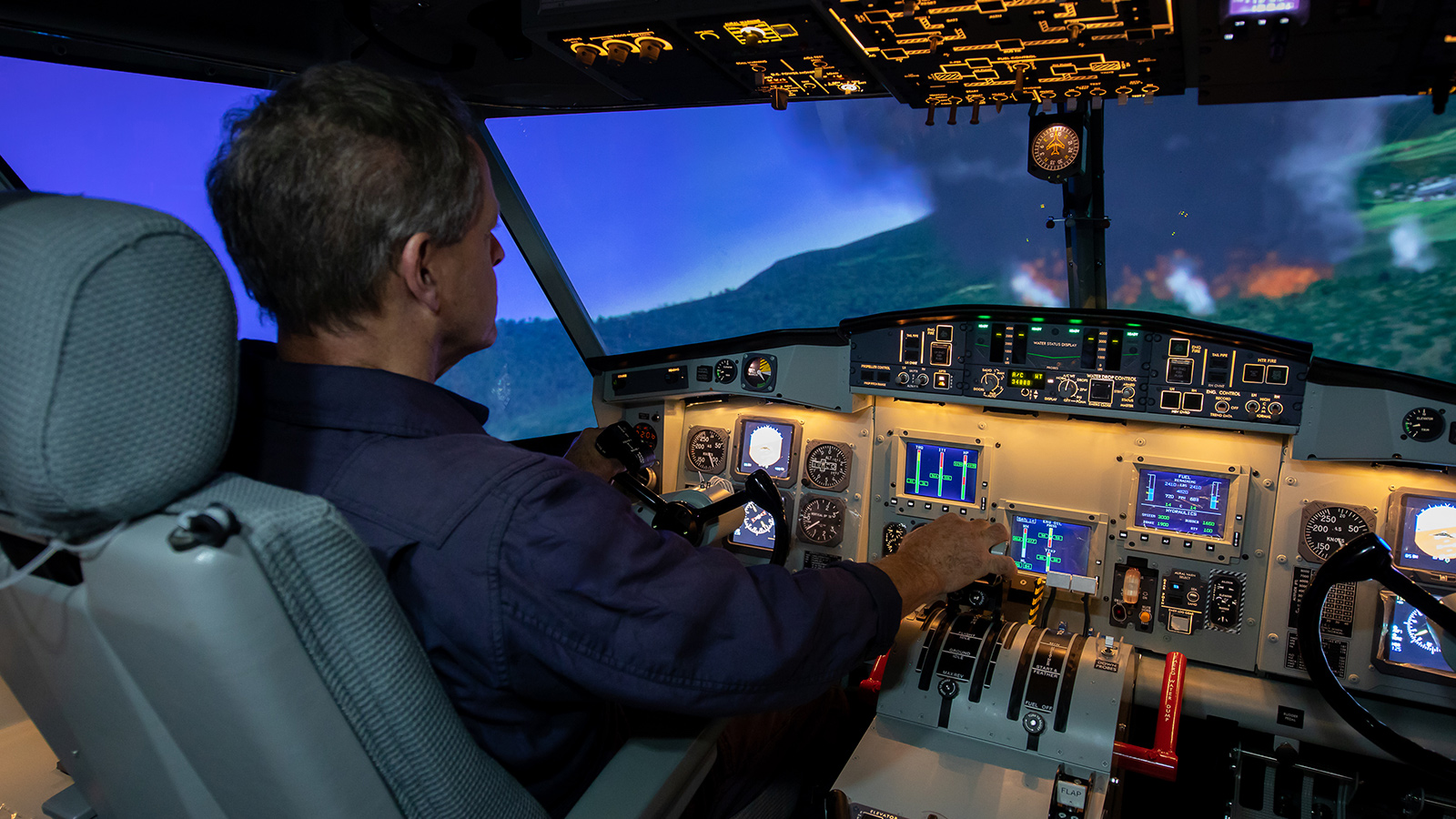Stay Up to Date
Submit your email address to receive the latest industry and Aerospace America news.
The pilot and co-pilot of a Canadair CL-415 water bomber must skim the surface of a lake to scoop up as much as 6,100 liters of water in 12 hull compartments. Then, buffeted by turbulence and updrafts, they dip low over wildfires to douse flames.
Simulating such maneuvers has been a daunting mechanical and software challenge, and that’s one reason pilots-in-training have never had a full-flight simulator for the CL-415 or any aerial firefighter. That changed in March, when trainees in Italy climbed into a full-flight simulator built specifically for the CL-415.
Such a Class D simulator sways in all directions on electro-pneumatic actuators as it replicates the motion, sound and vibration of the flight.
Engineers from TRU Simulation + Training, an 800-person Textron company, spent two years strengthening parts, making the sound louder and customizing software as they built the CL-415 simulator in Montreal.
“Even the vibrations you feel when moving the flaps has to be exactly like the aircraft,” says Thomas Allen, vice president of technology and innovation for TRU Simulation + Training.
Luckily, Textron engineers did not have to start from zero. They had previously worked with the engineers at Viking Air of Victoria, British Columbia, to develop the first full-flight simulator for a different plane, the DHC Twin Otter Series 400 built by Viking. Though not a firefighter, a Twin Otter can be equipped with floats for taking off from and landing on water.
TRU adapted the wave software it had created for the Twin Otter to the CL-415 to emulate surface waves and the waves that show in the pilot’s field of view as the aircraft plows across the surface.
There were entirely new challenges, too. Pilots had to feel what it’s like to slam into the water at 100 knots to scoop up water. Also, since the CL-415s were no longer in production, cockpit components had to be re-created.
TRU brought in water bomber pilots to help validate modeling and simulation of the firefighting mission. To attain Level D qualification from the European Union Safety Agency, TRU also filled a CL-415 with sensors and compared the data collected during a practice flight with the simulation.
“We’ve simulated updrafts and wind shear before, but when you’re flying over a very intense fire, those are quite extreme,” Allen says. “Our environmental modeling and simulation actually had to be increased quite a bit.”
About Debra Werner
A longtime contributor to Aerospace America, Debra is also a correspondent for Space News on the West Coast of the United States.
Related Posts
Stay Up to Date
Submit your email address to receive the latest industry and Aerospace America news.






